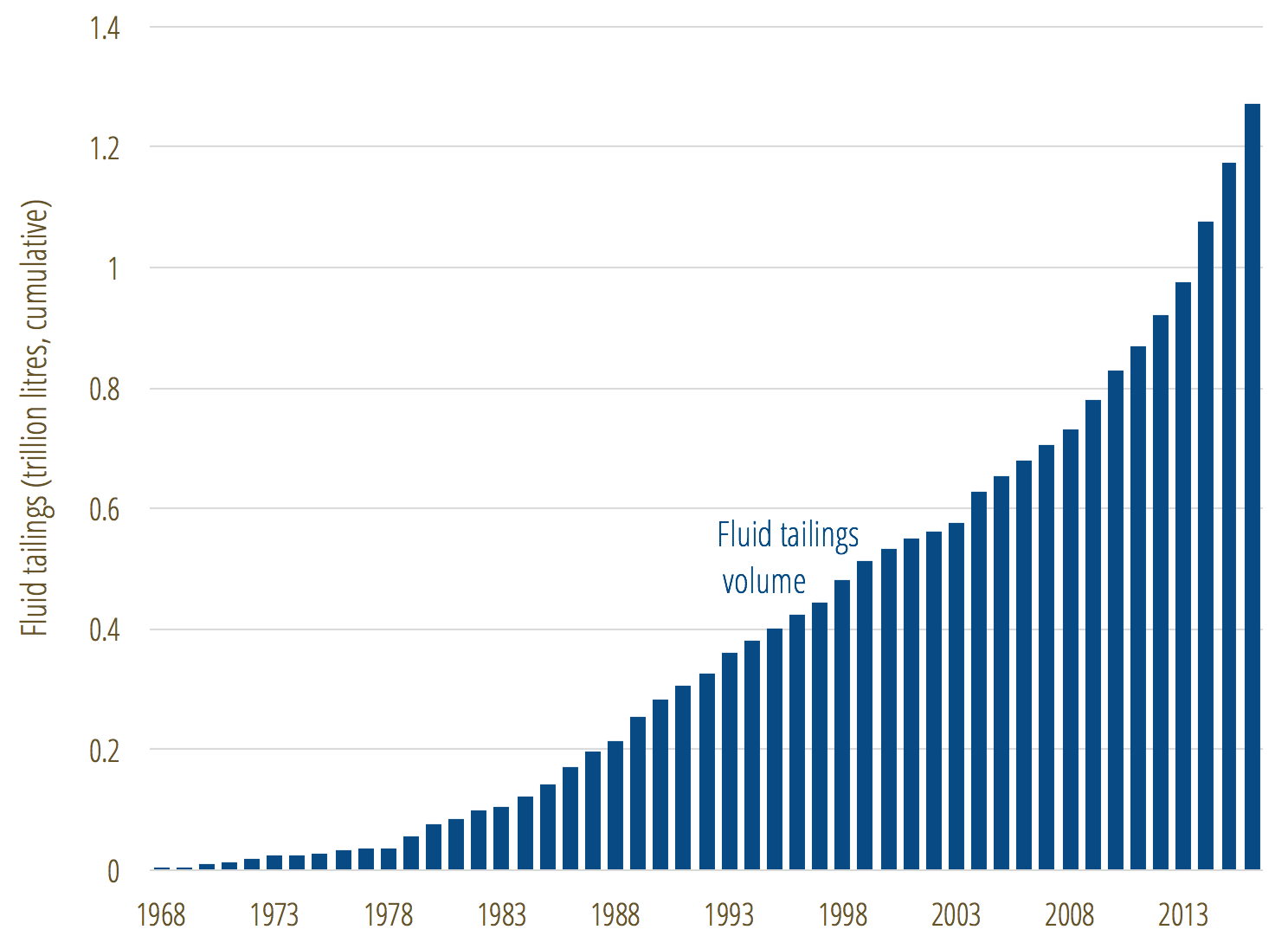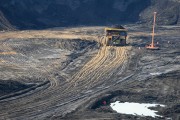Over the past 50 years, the development of the oilsands has changed the face of Alberta, driving innovation and technology to make oilsands a reality. The oilsands are the third largest oil reserve on earth, and despite a cycle of boom and busts, contribute to the prosperity of the province. Industry, however, has not addressed many of the largest environmental impacts generated by the oilsands, and much work is still left to be done. This blog is part of a series where we look back at the last 50 years of the oilsands industry and shed light on a number of the remaining challenges. See Part 1 here, Part 3 here, and Part 4 here.
The sheer size and scope of Alberta's some 20 oil sands tailings ponds is unprecedented for any industry in the world. According to the U.S. Department of the Interior, one of these ponds — the Mildred Lake Settling Basin — is the world's largest dam by volume of construction material. Since oilsands mining operations started in 1967, 1.3 trillion litres of fluid tailings has accumulated in these open ponds on the Northern Alberta landscape (Figure 1). This is enough toxic waste to fill 400,000 Olympic swimming pools.
Unlike tailings produced from conventional hard rock mining, the solids in oilsands tailings will take centuries to settle to the bottom of the ponds. As a result, it is impossible to dewater the waste for timely reclamation without significant intervention. This problem was recognized as early as 1973 by the Government of Alberta, which identified oilsands tailings as untreatable with existing technologies. The government recognized that the "continuous accumulation of liquid tailings" was not acceptable and that the ponds must be "restricted in their size, location and duration of use."
Unfortunately, that is not what happened. For the next five decades, industry pushed its tailings problem into the future with promises that forthcoming technologies would emerge to deal with them. As the years passed and tailings continued to grow, both industry and government assured Albertans that a silver-bullet technology was just one lab discovery away. In 2010 Suncor's CEO Rick George announced "massive change" on the tailings front, which would soon reduce Suncor's ponds from eight to one. In 2013, Premier Alison Redford declared that tailings ponds would “disappear from Alberta’s landscape in the very near future.”
These promises were never met, however, and today the tailings problem is worse than ever. According to new plans currently under review by the Alberta Energy Regulator, industry is proposing to let tailings continue to accumulate until 2037 when there will be over 1.5 trillion litres. That will equate to seven decades — from 1967 to 2037 — of industry seeking a technological solution and failing to meaningfully address this massive environmental problem.
Figure 1. Fluid tailing ponds volume growth since 1968

With tailings ponds continuing to grow on the landscape, the risk of failure poses an ever-increasing risk to communities, the environment, and taxpayers. Moreover, should the oilsands mining industry not survive accelerating global transitions toward decarbonized energy systems, Albertans must be protected from being left behind to foot the bill for enormous clean-up costs. However, less than 8 per cent of these costs is held as security by the province, leaving Albertan taxpayers exposed to a significant financial risk for tens of billions of dollars if major companies are no longer around when it's finally time to reclaim these sites.
Looking at these grim facts, it's worth asking: when will we as Albertans say enough is enough? Companies have kicked the can down the road on cleaning up their tailings for five decades now, but industry's own forecasts indicate that the worst is still yet to come.
Oilsands at 50 Series – The Real Cost of Development
Part 1: The Real GHG trend: Oilsands among the most carbon intensive crudes in North America
Part 2: Tailings ponds: The worst is yet to come
Part 3: Fifty years of oilsands equals only 0.1% of land reclaimed
Part 4: Protect Alberta’s caribou, or they won’t survive 50 more years










